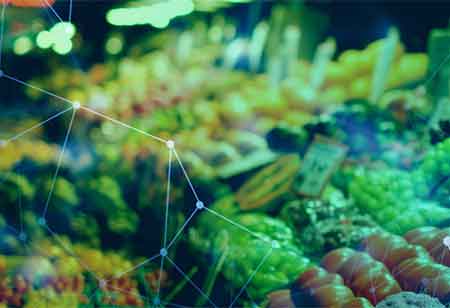Thank you for Subscribing to Food Business Review Weekly Brief
- Home
- Topics
- Alternative Proteins and Plant Based Food
- Beer and Wine
- Canned Beverages
- Coffee And Tea
- Food and Beverage Consulting
- Food and Beverage Financial Service
- Food And Beverages Marketing
- Food Distributors
- Food Ingredients
- Food Sustainability
- Plant Based Food and Beverages
- Seafood Suppliers
- Supplement Manufacturing
- Wine Investment
- News
- Vendor Viewpoint
- CXO Insights
- Conferences
- Newsletter
- CXO Awards
-
Elevate Your Culinary Experience with Advanced Kitchen Tools
Investing in kitchen technology for restaurants, along with maintaining proper upkeep and cleanliness, will enhance the safety of your kitchen, reduce labor expenses, and elevate the overall experience for your guests.

By
Food Business Review | Monday, December 16, 2024
Stay ahead of the industry with exclusive feature stories on the top companies, expert insights and the latest news delivered straight to your inbox. Subscribe today.

Investing in kitchen technology for restaurants, along with maintaining proper upkeep and cleanliness, will enhance the safety of your kitchen, reduce labor expenses, and elevate the overall experience for your guests. This article discusses some of the commercial kitchen technologies and equipment needed for a restaurant.
Fremont, CA: When contemplating the establishment of a new restaurant or the renovation of an existing kitchen, it is vital to select the appropriate appliances, tools, and equipment for the back of the house to ensure the long-term viability of your business.
In addition to acquiring the fundamental commercial kitchen equipment necessary for any restaurant, investing in essential kitchen technologies that can enhance your kitchen's operational efficiency is advisable.
Although advanced kitchen equipment may be more expensive than traditional options, various financing solutions, loans, and funding opportunities are readily accessible. Furthermore, advancements in restaurant technology enable kitchen equipment to serve multiple purposes, such as enhancing food safety, automating repetitive tasks, and reducing labor expenses.
Ultimately, restaurant kitchen technology allows you and your back-of-house staff to concentrate on your primary objective: preparing exceptional meals.
Food Safety Management System
Food safety management systems guarantee food inspectors' satisfaction and customers' well-being by facilitating compliance with food safety regulations and minimizing paperwork.
These systems encompass a variety of tools, including software applications and smartphone solutions, as well as comprehensive networks of appliances capable of automatically monitoring essential food safety parameters.
The advantages of implementing food safety management systems include:
● Elimination of Paperwork: This suite of kitchen management tools utilizes cloud technology to better track inspections conducted by your team, significantly reducing the likelihood of lost documentation.
● Enhanced Health Inspection Outcomes: An effective food safety management system will provide timely reminders for kitchen inspections, utilizing a digital checklist to ensure compliance with food safety standards.
● Reduced Liability: A food safety management system can safeguard your establishment against unfounded food poisoning claims through detailed analytics and reporting features. With streamlined record-keeping, you can readily demonstrate to food inspectors that your ingredients and equipment meet regulatory standards, mitigating legal action risk. Additionally, a kitchen prep list template can assist your staff in maintaining organization and monitoring daily ingredient preparations.
Internet of Things: A Remotely Controlled Kitchen
The Internet of Things (IoT) is a network of physical devices and appliances that utilize digital connectivity to communicate. In a commercial kitchen environment, IoT technology can facilitate the development of a bright kitchen that can be controlled remotely.
In such an IoT-enabled kitchen, your refrigerator could automatically monitor and reorder supplies as needed. This is merely one illustration of an IoT kitchen's myriad applications and potentialities. The following are some advantages of a remotely managed IoT kitchen:
● Reduced Labor Expenses: A bright kitchen capable of automating routine tasks like monitoring equipment and managing inventory enables greater efficiency with a smaller workforce.
● Enhanced Customer Experience: Intelligent appliances that monitor kitchen operations reduce human error and enhance the consistency of food preparation.
● Increased Reassurance: With the capability for remote monitoring via the Internet of Things, you can oversee your restaurant's kitchen operations from any location.
A remotely controlled kitchen differs from most of the kitchen technologies discussed in this article, as it is not a standardized product but a customized network. Internet of Things (IoT) providers can design and implement a tailored IoT kitchen that meets your restaurant's specific needs.
Kitchen Display System
A kitchen display system (KDS) is an essential technological advancement for any commercial kitchen. KDS replaces traditional kitchen receipt printers, enhancing communication between front-of-house and back-of-house staff.
The advantages of implementing a kitchen display system include:
● Immediate Order Visibility: A digital kitchen order system displays orders instantly on a monitor or tablet, eliminating the wait for printed receipts.
● Enhanced Cooking Efficiency: Advanced kitchen display systems monitor the time your team takes to complete orders. This information can assist in managing your back-of-house operations and facilitate informed decisions regarding your menu.






